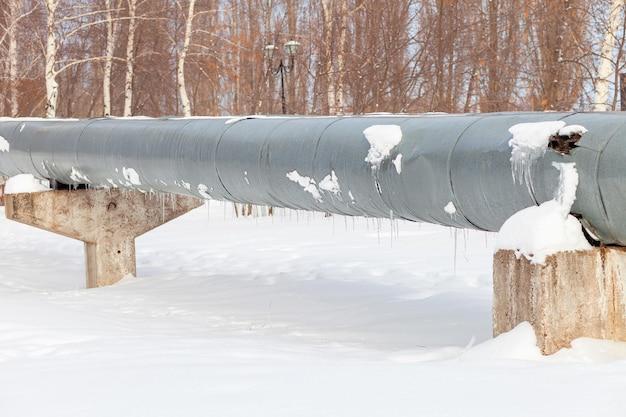Wood is a material that has been used for various purposes throughout history, but have you ever wondered whether it conducts heat? In this blog post, we will delve into the intriguing world of thermodynamics to explore just how heat interacts with wood. We will uncover whether wood allows heat to pass through easily or whether it acts as an insulator. So, if you have ever pondered about the warmth of plastic versus wood, or if you are curious about the examples of poor heat conductors, this post is for you!
Does Wood Conduct Heat
Wood is known for its natural beauty, but have you ever wondered if it can also conduct heat? Well, grab your cup of coffee and let’s dive into the fascinating world of thermal conductivity in wood.
The Ins and Outs of Heat Conduction in Wood
When it comes to heat conduction, different materials have different abilities. Metals, like copper and aluminum, are known for their impressive heat conducting prowess. But what about wood? Can it keep up with the hotshots?
Thermal Conductivity: A Measure of Heat Travel
Thermal conductivity is a metric that measures how well a material conducts heat. Essentially, it tells us how easily heat can flow through a substance. The higher the thermal conductivity, the better the material is at transferring heat.
Wood’s Thermal Conductivity: The Not-So-Hot Truth
Now, let’s address the burning question: does wood conduct heat? Well, the truth may surprise you. Wood is actually not a great conductor of heat. In fact, it’s considered to be a poor conductor.
The Wood-Heat Relationship
You see, wood is made up of tiny fibers, and these fibers are like barriers for heat flow. They interrupt the transfer of heat, making it harder for it to travel through the wood. So, when you touch a wooden surface, it doesn’t feel as scorching hot as, say, a metal one.
Does Wood Have Any Heat Tricks Up Its Sleeve
While wood may not be able to win any heat conductivity competitions, it does have some clever heat tricks up its sleeve. Thanks to its low thermal conductivity, wood acts as a natural insulator.
Wood: The Cozy Blanket of Materials
Think of wood like a cozy blanket on a chilly winter night. It has this amazing ability to trap heat and keep it from escaping. That’s why wooden houses or furniture can feel warm and inviting.
The Applications of Wood’s Thermal Behavior
Wood’s thermal behavior has some practical implications, too. Its low thermal conductivity makes it a great choice for structures that require insulation, like log cabins or wooden window frames. And let’s not forget about the humble cutting board – wood’s heat resistance protects it from warping or scorching under hot pots and pans.
Wood: Keeping It Cool
In addition to its insulating properties, wood has another nifty trick. It doesn’t get as hot as other materials when exposed to the sun. So, you can comfortably stroll barefoot on a wooden deck under the scorching summer sun without your feet sizzling like bacon.
Wrapping Up
So, there you have it. Wood may not be the best conductor of heat, but it has its own unique thermal properties that make it a versatile material. From its ability to insulate to its heat resistance, wood continues to show us that it’s not just a pretty face.
FAQ: Does Wood Conduct Heat
In this FAQ-style subsection, we will answer some common questions about the heat conductivity of wood. Whether you’re curious about why wood is a poor conductor of heat or want to understand the difference between wood and other materials, we’ve got you covered!
Do not allow heat to pass through them easily
Wood is a natural material that does not allow heat to pass through easily. Unlike metals, which are excellent conductors of heat, wood has a cellular structure that slows down the transfer of heat energy. This makes it a great insulator, perfect for keeping your home cozy on chilly winter nights.
What happens to wood in the heat
When exposed to heat, wood undergoes some changes. First, it absorbs the heat energy, causing the temperature of the wood to rise. Then, as the temperature increases, the wood may start to dry out and potentially release moisture. This process can lead to warping, cracking, or even charring if the heat intensity is high.
What is warmer, plastic or wood
When it comes to warmth, wood tends to feel warmer than plastic. This is because wood is a better insulator and does not conduct heat as readily as plastic. So, if you’re looking for that cozy feeling underfoot or in your hands, wood is the way to go!
What are some examples of poor conductors of heat
Apart from wood, there are several other materials that are known for their poor heat conductivity. Some examples include rubber, wool, air, Styrofoam, and certain types of plastic. These materials are popular choices when insulation is needed, as they help prevent the transfer of heat.
Is wood a bad insulator
No, wood is actually considered a good insulator. Its cellular structure, filled with air pockets, hinders the flow of heat, making it difficult for heat energy to pass through. This is why wood is commonly used in construction, furniture, and even cooking utensils.
Which metal is the poorest conductor of heat and electricity
Of all the metals, bismuth takes the crown for being the poorest conductor of both heat and electricity. With its unique atomic structure, bismuth disrupts the flow of particles and minimizes conductivity. This property makes it incredibly useful in applications where low conductivity is desired, such as some types of electrical equipment.
Do all materials conduct heat
Yes, all materials have the capacity to conduct heat to some extent. However, the degree of conductivity varies greatly. While metals are generally excellent conductors, non-metallic materials like wood, plastic, and rubber are poor conductors. Insulators, on the other hand, are materials that exhibit extremely low heat conductivity.
What is the most heat-resistant wood
When it comes to heat resistance, one standout wood is the aptly named “Ipe” (pronounced ee-pay). This tropical hardwood is hailed as one of the most durable and heat-resistant woods available, making it highly sought after for outdoor applications such as decking and siding.
Why do insulators not conduct heat
Insulators, like wood and plastic, do not conduct heat due to their molecular structure. In these materials, the electrons are tightly bound, limiting their freedom to move and pass heat energy from one atom to another. Instead, the heat energy is primarily trapped within the material, making it an effective insulator.
Why are plastic and wood bad conductors of heat
Plastic and wood make poor conductors of heat primarily because of the way their molecules are structured. In both materials, the molecular bonds are relatively weak, restricting the movement of heat-conducting particles. This limited thermal conductivity helps to preserve the temperature of objects made from plastic or wood, making them great choices for insulation.
Is wood a conductor or insulator of heat
Wood is an insulator of heat. While it can conduct heat to a certain degree, it is considered a poor conductor compared to metals. The cellular structure of wood, coupled with low thermal conductivity, makes it excellent at slowing down the transfer of heat energy and preserving warmth.
What are some good insulators of heat
Besides wood and plastic, there are several other materials known for their excellent insulating properties. These include fiberglass, cork, ceramic, foam, and mineral wool. These materials are frequently used for insulation in various applications, from homes and buildings to industrial processes.
Is plastic more conductive than wood
No, plastic is not more conductive than wood. In fact, plastic is also a poor conductor of heat. It shares similarities with wood in terms of its molecular structure, hindering the flow of heat energy. So, when it comes to heat conductivity, both wood and plastic are on equal footing.
Does cardboard keep heat out
Cardboard, while it may not be the most effective heat insulator, does provide a certain level of temperature protection. As a fibrous material, cardboard contains air pockets that can slow down the transfer of heat. However, compared to more specialized insulating materials, its effectiveness in keeping heat out is limited.
What is the best insulator
When it comes to the best insulator, it would be hard to beat a vacuum. Without any particles or molecules to transfer heat energy, a vacuum effectively eliminates heat conduction. This is why vacuum insulation panels are highly efficient at preventing heat transfer and are widely used in high-performance insulation applications.
What material stays cool in the heat
Ceramic is a material that stays remarkably cool in the heat. Its high heat capacity allows it to absorb a significant amount of heat energy without experiencing a noticeable increase in temperature. That’s why you’ll often find ceramic used in heat-resistant applications like oven mitts, tiles for fireplaces, and protective coatings for industrial equipment.
Does wood or metal conduct heat better
Metal conducts heat significantly better than wood. Metals have free electrons that can easily pass heat energy from one atom to another. This ability for heat conduction is what makes metals feel cold to the touch. Wood, on the other hand, slows down the transfer of heat due to its cellular structure, providing a warmer feel.
Is wood or plastic a better insulator
Both wood and plastic have excellent insulating properties, but it’s hard to say which is a better insulator. When it comes to heat conductivity, they are quite similar due to their molecular structures. However, wood tends to feel warmer to the touch, while plastic may have more insulating versatility in terms of applications and ease of manufacturing.
Is plastic a good or bad conductor of heat
Plastic is considered a bad conductor of heat, just like wood. Its molecular structure limits the movement of heat-conducting particles, resulting in low thermal conductivity. This property has made plastic widely used as an insulating material in various industries, such as electronics, construction, and packaging.
What do you call the materials that do not conduct heat
Materials that do not conduct heat are commonly referred to as insulators. These materials have properties that impede the flow of heat energy, preventing or slowing down heat transfer. Examples of insulators include wood, plastic, rubber, glass, and air. Insulators play a crucial role in maintaining temperature differentials and providing thermal insulation.
Why is wood a bad insulator
Apologies for the confusion earlier, but wood is not a bad insulator at all. In fact, it is a highly effective insulator due to its low thermal conductivity. The cellular structure of wood, filled with air pockets, helps to impede the flow of heat energy. So, if you’re looking for an excellent natural insulator, wood is a fantastic choice!
Which is the bad conductor
Among the materials mentioned in this FAQ section, wood can be considered a poor conductor of heat compared to metals. While wood does conduct heat to some extent, its thermal conductivity is significantly lower than that of metals. So, in the world of heat conduction, we can say that wood takes the badge for being the “not-so-great” conductor.
We hope this FAQ section has shed some light on the heat conductivity of wood. Whether you’re looking to understand the insulating properties of wood or comparing its performance with other materials, wood’s ability to resist heat transfer makes it a valuable asset in various applications.

